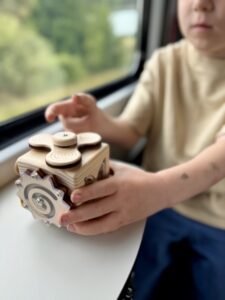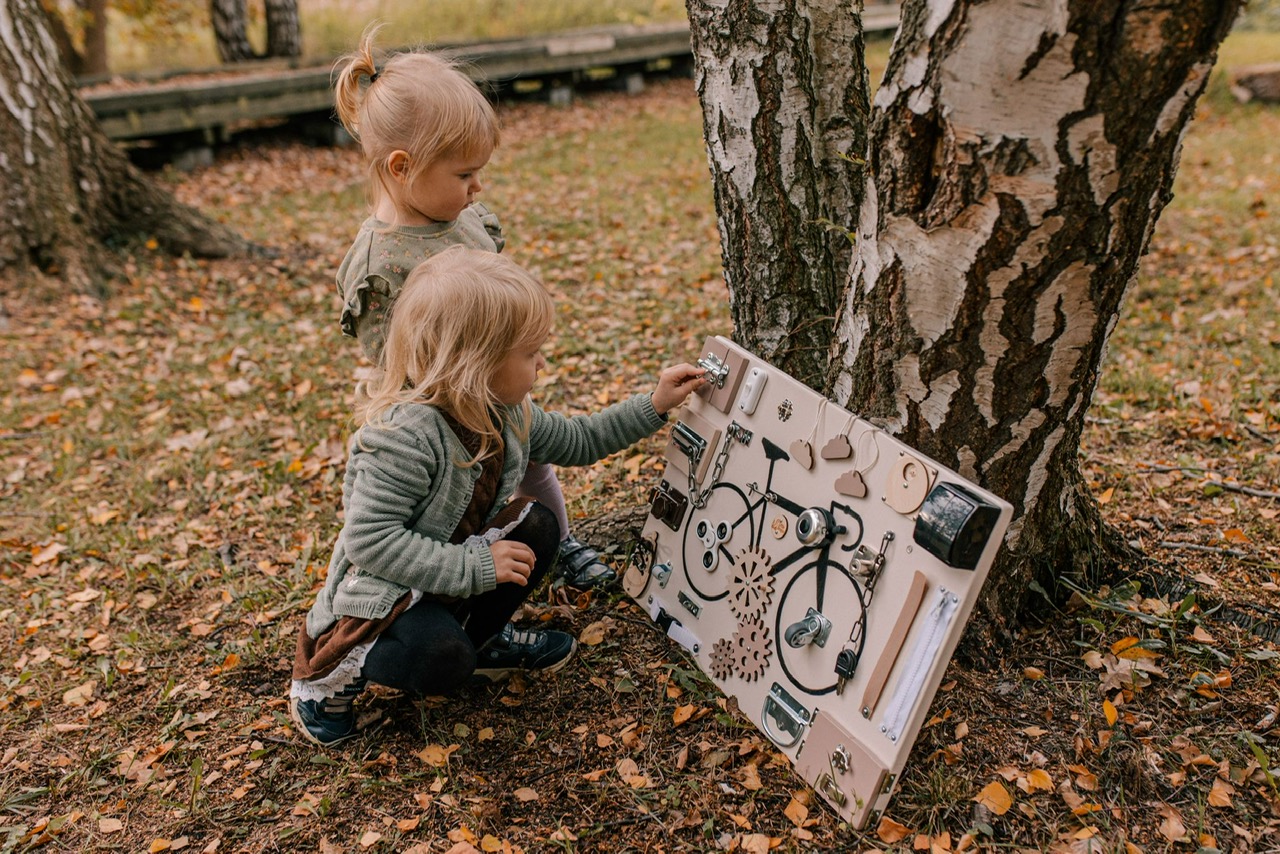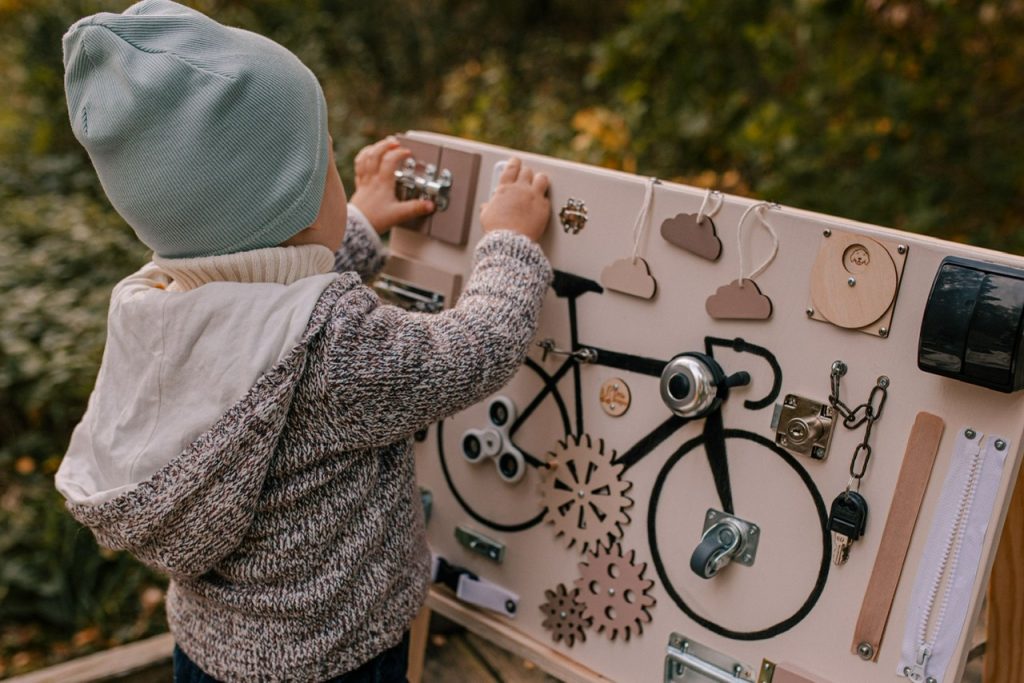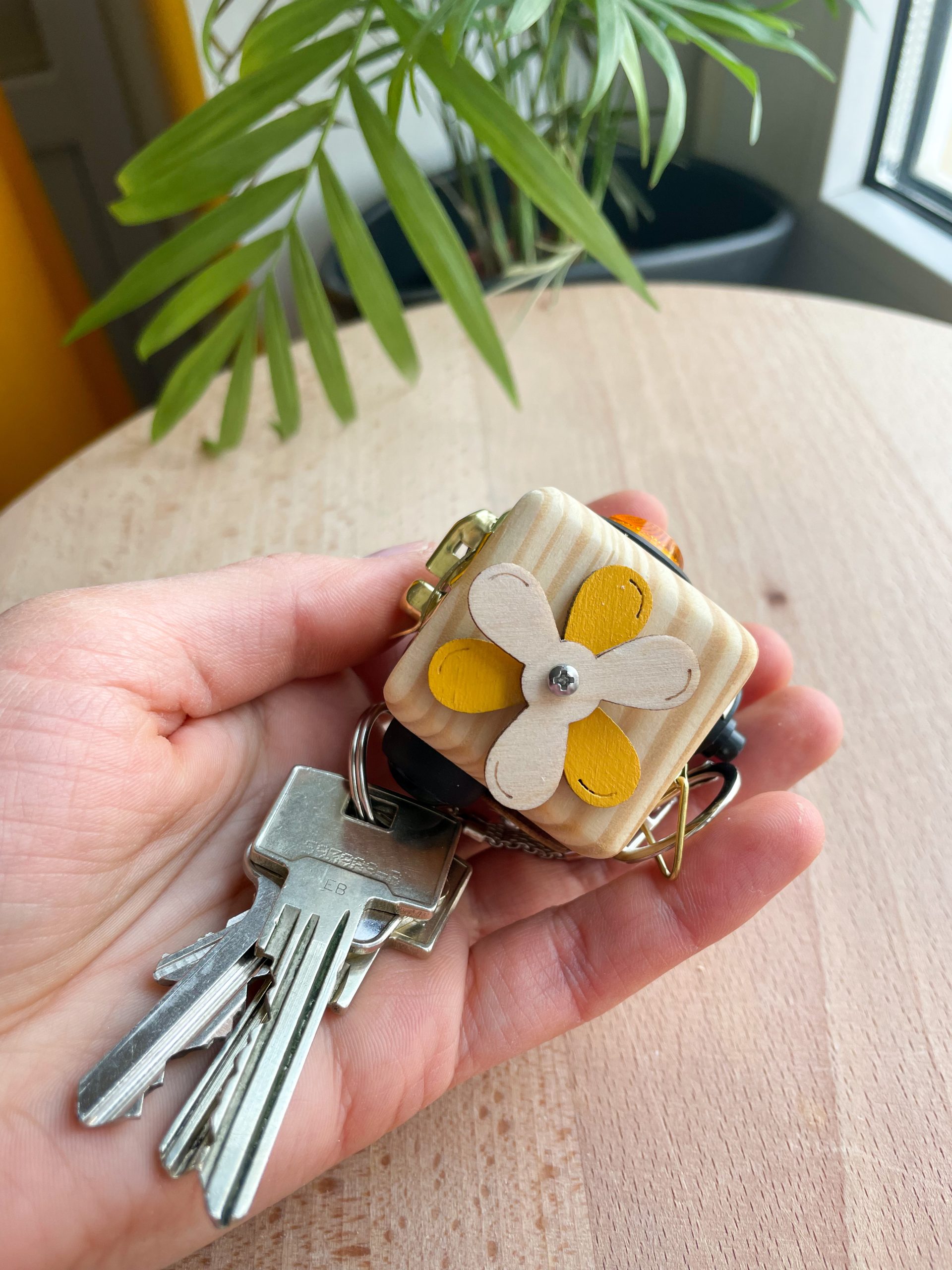
Toys for the airplane – what will occupy the child during the trip?
Traveling with a child is a challenge, especially on an airplane, where space is limited

The manipulative boards are not only toys, but also tools for developing creativity, cognitive and motor skills in children. Nowadays, with technology becoming more and more prevalent in everyday life, it is worth looking into alternative forms of play that promote physical activity and intellectual development. Manipulation boards are an ideal example of toys that combine educational and entertainment elements. They not only provide entertainment, but also teach and develop the child’s skills.
The manipulative boards are an excellent tool to promote the development of children’s fine motor skills through interactive play. Through the manipulation of various elements, such as buttons, snaps and moving parts, children improve the precision of finger and hand movements. This activity not only strengthens their manual skills, but also develops motor coordination and perceptual abilities. It is with the help of manipulative boards that children learn to control their movements, which is important for school studies, as well as daily life activities.
Sensory boards, rich in a variety of textures, shapes and sounds, are an excellent tool for sensory stimulation in children. Through touch and exploration of a variety of materials, such as soft fur, smooth surfaces and ringing beads, children develop their senses and sensory perception skills. This interactive play not only stimulates their curiosity about the world, but also promotes the development of cognitive and emotional skills. With sensory arrays, children learn to recognize and respond to a variety of environmental stimuli, which is important for their further development and learning.
Fun with manipulative boards not only develops children’s fine motor skills, but also stimulates their creativity and imagination. By manipulating various elements of the boards, children are encouraged to experiment and create their own stories and scenarios. The boards become not only a place for them to play, but also a platform for storytelling, building, creating puzzles and many other activities. Through this, children not only develop manual skills, but also learn to express themselves and use their imagination in creative ways.
Manipulative boards are not only a source of fun, but also an excellent form of learning through interactive play. Through them, children can develop a variety of cognitive, mathematical, linguistic and social skills, unconsciously learning through experience and experimentation. While playing with the boards, children can learn to recognize colors, shapes, count, compare and communicate with others, which contributes to their all-round development. This interactive form of learning makes education fun and natural, which promotes more effective acquisition of knowledge and skills.
There is a wide range of different types of handling boards, each of which has its own distinctive features and applications. Some boards focus on developing fine motor skills by manipulating buttons, snaps and moving parts. Others focus on stimulating the senses through a variety of textures and sounds. The boards can also be thematic, such as containing elements related to the alphabet, numbers, shapes or animals, allowing learning and play in the context of a specific topic. Thanks to the variety of manipulative boards, every child can find a toy that suits his or her interests and developmental needs.
Sensory boards are mainly a tool for stimulating a child’s senses through a variety of textures, shapes, colors and sounds. They contain materials such as sands, beads, textured fabrics, bells or buttons that stimulate a child’s senses of touch, sight and hearing. By interacting with the various elements of the sensory boards, children develop their sensory perception, imagination and cognitive abilities. Such toys are an excellent tool for the little ones to explore and discover the world, allowing them to explore new experiences and develop their senses in an interactive and engaging way.
Educational boards focus on developing specific skills, such as recognizing letters, numbers, shapes or colors. They are usually equipped with interactive elements, such as sliding shapes, moving letters or numbers, which support the process of learning basic concepts. Thanks to the interactive nature of the educational boards, children can actively engage in the learning process through manipulation and exploration. It’s a great way to develop cognitive skills in an interactive and engaging way that makes learning interesting and fun for the little ones.
Montessori boards are based on the teaching method developed by Maria Montessori, which emphasizes the development of independence and exploration in children. They are usually made of natural materials, such as wood, which emphasizes the ecological character. These boards contain simple tasks and activities that stimulate the child’s cognitive and motor skills. By interacting with montessori boards, children learn through hands-on experience. They develop the ability to solve problems independently and explore the world in an autonomous and enjoyable way. It is an ideal tool for the all-around development of the little ones.
When choosing a manipulative board for a child, it is important to take into account the child’s age, interests and developmental needs. The boards should be tailored to the child’s skills and abilities, providing interactive play in an active and safe manner. When choosing a board, pay attention to its level of difficulty and the type of activities it offers. It is important that it is suitably attractive and developing for the child. In this way, the manipulative board will become an effective tool to support his development and encourage exploration and learning through play.
Manipulative boards is a versatile tool that can be used in many creative ways, both in individual and group play. Children can use them to create stories, solve problems, practice math skills or learn new words and concepts. By interacting with various elements of the boards, such as buttons, snaps and moving parts, children develop their imagination and cognitive skills. At the same time, they learn in an active and engaging way. The manipulative boards are therefore not only a source of entertainment, but also a valuable aid to learning and developing creativity in children.
The manipulative boards are suitable for children of all ages, from the youngest infants to older preschoolers. There are boards specifically designed for children ages 1-2 that contain large, safe pieces that are easy to grasp and manipulate. For older children, however, there are boards that offer more advanced activities and tasks that develop their cognitive, motor and social skills. Thanks to the variety of manipulative boards, every child can find the right toy to suit his or her age, skills and interests, providing interesting and developing fun.
Scientific research confirms that regular play with manipulative boards has a beneficial effect on a child’s development. Through manipulation, exploration and interaction with various elements of the boards, children develop their cognitive, motor, emotional and social skills. Through active participation in the game, toddlers improve manual skills, learn to recognize shapes, colors, count. They also develop imagination and creativity. Regular use of manipulative boards can also support the development of interpersonal skills by encouraging cooperation and sharing toys with other children, which fosters social relationships.
Manipulative boards can be an effective therapeutic tool for children with autism. Thanks to their interactive and sensory nature, the boards can help build relationships, develop communication skills and regulate emotions in children with autism spectrum disorders. By interacting with various elements of the boards, such as textures shapes and sounds, children can experience sensory stimuli in a controlled environment. This can support their adaptation and sensory integration process. Regular therapy sessions using manipulative boards can bring positive results in the therapeutic process of children with autism.
Manipulation Boards for Children in SI Therapy.
Sensory integration (SI) therapy uses a variety of sensory stimuli to regulate cognitive and emotional processes in children. The manipulative boards can be used as part of SI therapy to stimulate a child’s senses and help them process external stimuli. By interacting with the boards, children learn to regulate their responses to sensory stimuli. This can help improve cognitive and social functioning. Regular therapy sessions using manipulative boards can be an effective tool in the process of SI therapy for children with various developmental disorders.

Pay attention to the safety and cleanliness of the toy when playing with the manipulative boards. Make sure the board is made of safe and non-toxic materials that do not pose a health risk to the child. It is important that the board is solidly made, without sharp edges or small parts that can be swallowed by a child. Regularly wash and disinfect the board to prevent the spread of germs and bacteria. Ensuring proper cleanliness and safety conditions when playing with manipulative boards will create a healthy and safe play environment.
For a 2-year-old, manipulative boards that have large, safe pieces that are not a swallow hazard will be best. Sensory boards with different textures and shapes can be especially attractive to young children.
Yes, manipulative boards can be an effective therapeutic tool in sensory integration (SI) therapy. With a variety of textures, shapes and sounds, the boards can stimulate children’s senses and help them process sensory input.
Yes, there are handling boards made of eco-friendly materials, such as wood or organic fabrics. These boards are child-safe and environmentally friendly, making them a great choice for eco-friendly parents.

Traveling with a child is a challenge, especially on an airplane, where space is limited

Choosing the right gift for a 2-year-old boy can be a challenge, especially when you

In today’s busy world, more and more people are looking for ways to reduce stress
| Cookie | Duration | Description |
|---|---|---|
| cookielawinfo-checkbox-analytics | This cookie is set by GDPR Cookie Consent plugin. The cookie is used to store the user consent for the cookies in the category "Analytics". | |
| cookielawinfo-checkbox-functional | The cookie is set by GDPR cookie consent to record the user consent for the cookies in the category "Functional". | |
| cookielawinfo-checkbox-necessary | This cookie is set by GDPR Cookie Consent plugin. The cookies is used to store the user consent for the cookies in the category "Necessary". | |
| cookielawinfo-checkbox-others | This cookie is set by GDPR Cookie Consent plugin. The cookie is used to store the user consent for the cookies in the category "Other. | |
| cookielawinfo-checkbox-performance | This cookie is set by GDPR Cookie Consent plugin. The cookie is used to store the user consent for the cookies in the category "Performance". | |
| viewed_cookie_policy | The cookie is set by the GDPR Cookie Consent plugin and is used to store whether or not a user has consented to the use of cookies. It does not store any personal data. |